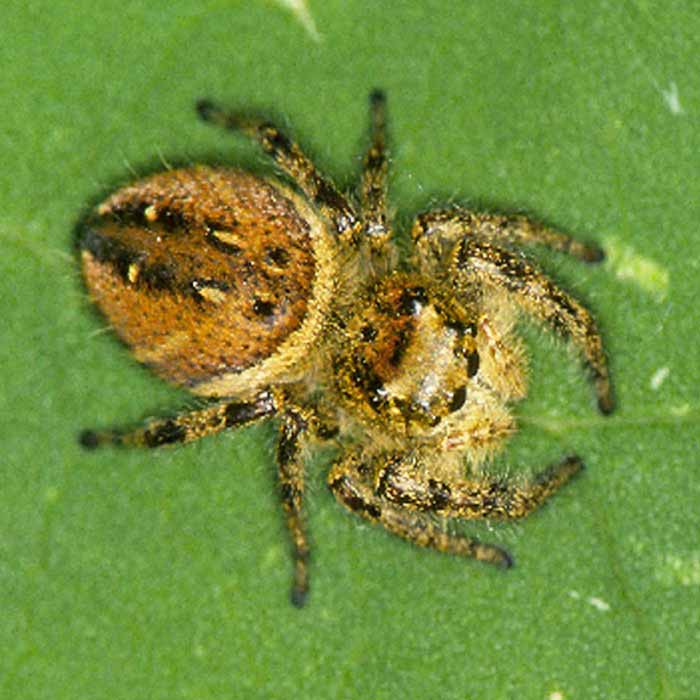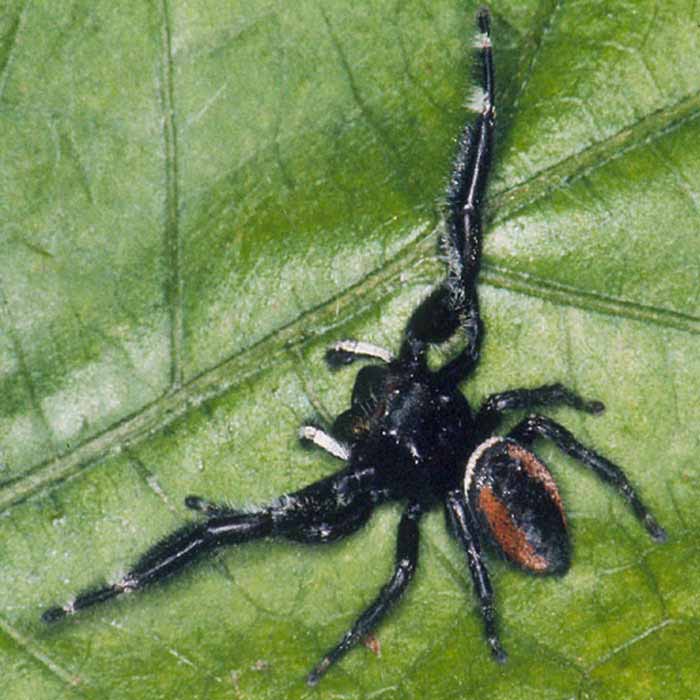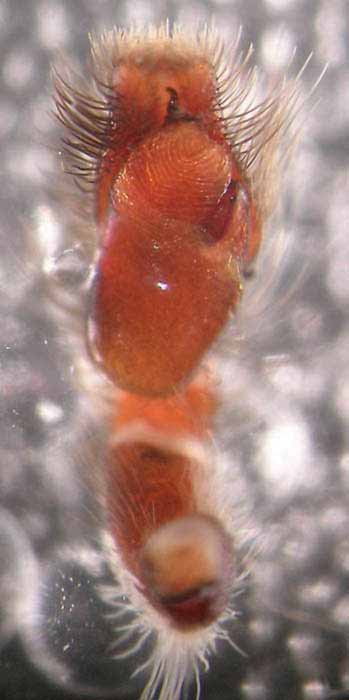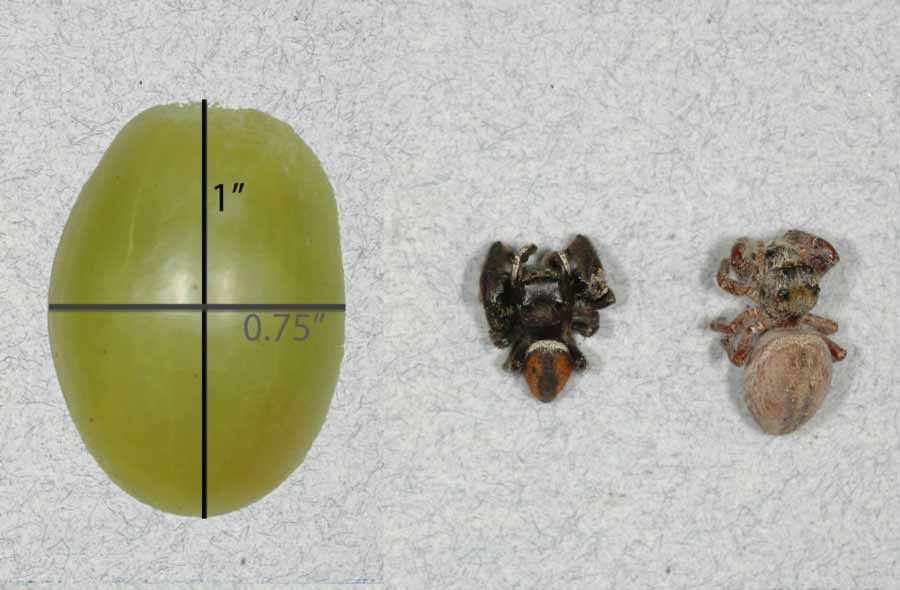Phidippus clarus
|
adult female, live |
|
adult male, live |
|
female genitalia; epigynum |
|
male genitalia; palp, lateral view |
|
male genitalia; palp, ventral view |
|
grape size comparison with adult spiders; male (left), female (right) |
Current valid name
Phidippus clarus Keyserling (family Salticidae)
Recognition and diagnostic features
Males have red lateral stripes on abdomen and white stripes on the dorsal portion of the palp (femur, patella, tibia). Female not vividly colored as in other Phidippus species and might be confused with immatures of several Phidippus.
Related or similar species
Immatures of other Phidippus species could be mistaken for a female of this species, or the male might be mistaken for the female of Phidippus johnsoni.
Spider
Body lengths when mature: male: 3.2 to 10.1 mm, female: 4.2 to 14.2 mm
Adults exhibit sexual dimorphism. Immatures have different coloration from adults, and may look very similar to immatures of other Phidippus species.
Egg sac
Number of eggs per sac: 83.3 (range = 7 to 207)
Time of year eggs are likely to be laid: probably April and May
Distribution
In California: northern half of state
Elsewhere: every state east of the Rocky Mountains with a few finds in Canada and Mexico
Native to North America
This species has not been transported or become established outside of its range.
Biology
Throughout the United States, it is found mostly in old fields at the top of vegetation, where it lays its eggs in the canopy.
Status in table grapes
Level of Incidence: rare
Level of Concern in New Zealand: WPNZ (May 2010) nr, BORIC (Dec 2011) nr (not listed), MAF-BPRA (2002) nr (coding definition)
Level of Concern in Australia: WPAU (2006) nr (coding definition)
Level of Medical importance: possible biter with strong fang musculature, most injury is likely due to mechanical fang puncture not venom toxicity
Common name
None for species, jumping spiders for famliy
Taxonomic history
Many synonyms early on, but stable for the last 70 years.
Selected references
Edwards, G. B. 2004. Revision of the jumping spiders of the genus Phidippus (Araneae: Salticidae). Occasional Papers Florida St. Coll. Arthropods 11: 1-156.
Roach, S. H. 1988. Reproductive periods of Phidippus species (Araneae, Salticidae) in South Carolina. J. Arachnol. 16: 95-101.







